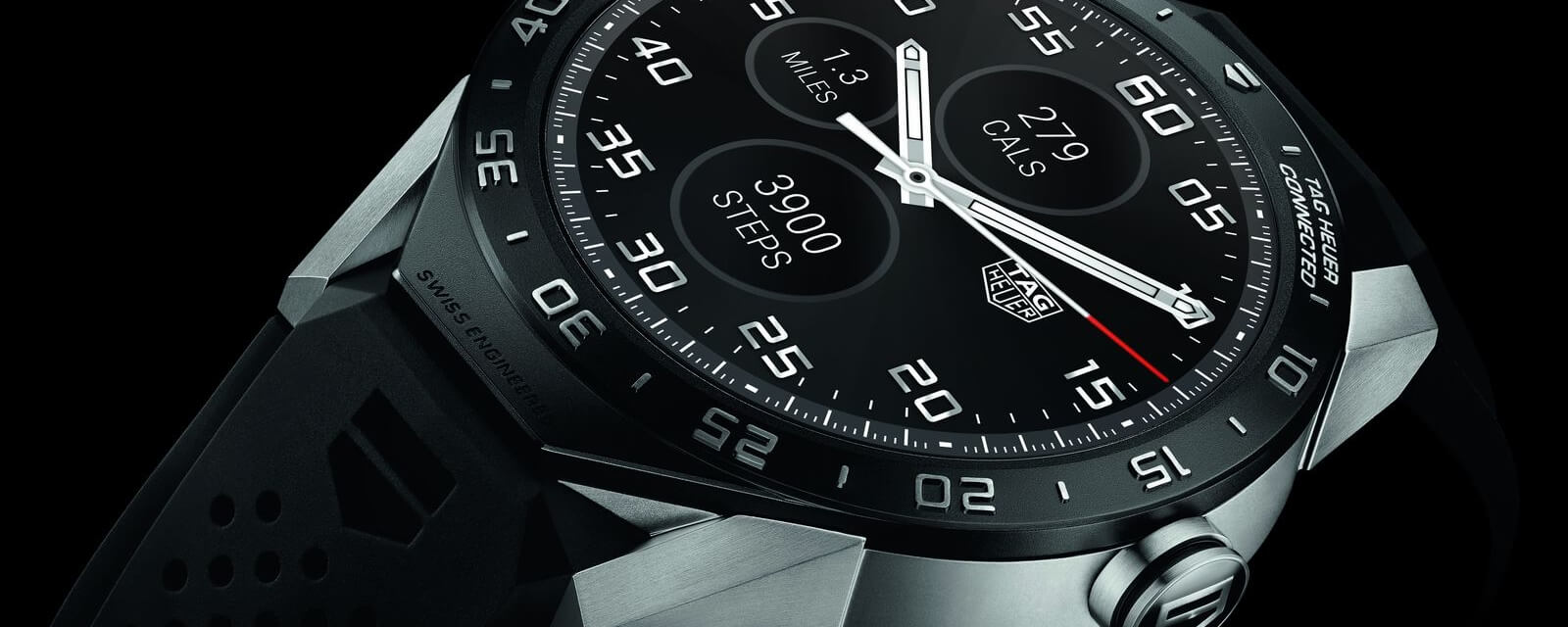Pebble is arguably responsible for helping to jumpstart the modern wearable movement. They raised over $10 million through their Kickstarter campaign in 2012, and since then pretty much every major tech company has hopped on the bandwagon, including Apple, LG, Samsung, Motorola and Sony. Even more traditional watch makers such as Fossil and Tag Heuer have made their own attempts at blending their classic designs with our connected lifestyles. Choosing the best smartwatch, however, is no easy task. There's a plethora of options, and frankly, they are not powerful or versatile enough at this time to make any of them a 'must-buy' for most people - especially at the current prices.
If you are set on buying a smartwatch, however, there are a handful of things to consider - compatibility and key features being chief among them. With that in mind, the following are our picks for you - whether you are an Android user, committed to iPhones, looking for something that is fitness centric to track regular workouts or exercise, or if you're into into luxury watches and also happen to be curious about the current smartwatch trend.
Best for Apple Users
Apple Watch (First-gen)
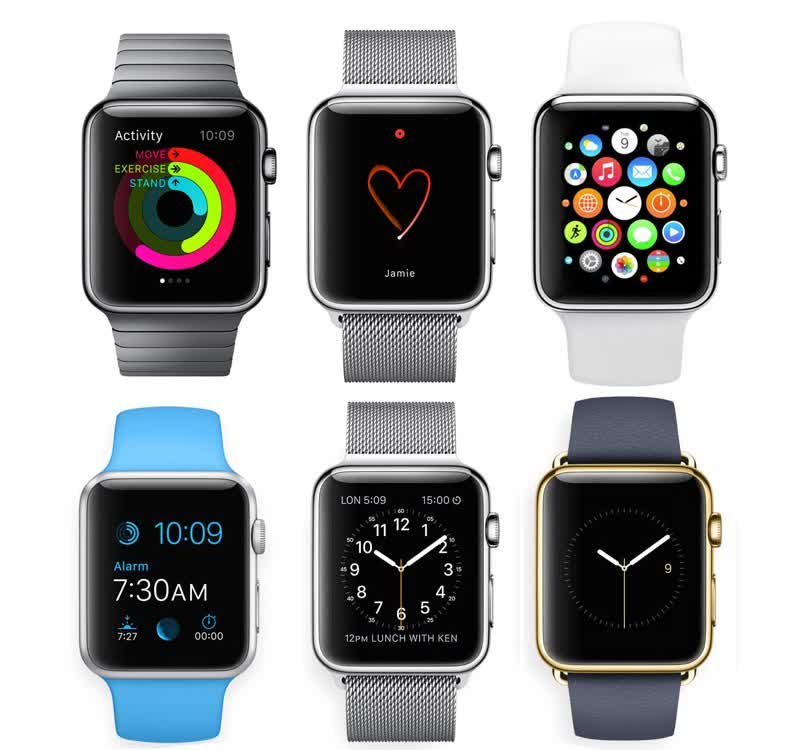
Apple's smartwatch is compact and really nicely built. Whether you find it beautiful or not is a matter of taste, but you can see the level of craftsmanship that went into creating the company's first wearable, from the materials used to the quality of the display, the digital crown and the many different bands and watch faces.
The screen is both large enough and clear enough for text to be easily readable. The digital crown lets you scroll smoothly through content while keeping your finger from blocking what you're trying to read. The Apple Watch's Taptic Engine is a really nice touch, adding a physical dimension to notifications with a gentle tap on the wrist - instead of an annoying vibration. The screen doesn't automatically turn on when you get a notification, either. You feel a tap but the notification is only displayed when you raise the watch to look at it.
In terms of functionality, this is the obvious pick if you're committed to the iPhone. It offers the best integration with iOS and Apple's services, and many of your existing apps will offer a Watch companion app. You can display pretty much any notification from your phone: text messages, tweets, Instagram likes, Gmail alerts and so on. Fortunately, you get fine-grained control over which notifications you receive on the watch to stop the less relevant ones from bugging you.
It also lets you take phone calls on your wrist, doubles as a capable fitness tracker, gives you turn by turn directions, and lets you make payments. It doesn't necessarily do all of those things better than your phone, but makes some of them easier or more convenient when you're out and about. This is the first version of the Apple Watch, so we expect that Apple will continue refining the experience and upgrading the hardware, much as they do with their other products.
Apple promises enough battery life to get you through the day, and, for the most part, it delivers. Apple doesn't advertise it's water resistance, but the Apple Watch seems to handle water just fine; it can even take being submerged for a while.
Our recommendation would be to go with the cheaper Sport model. The entry-level Sport model offers the same features as its pricier siblings and its price was recently dropped to $299 or $349 -- depending if you get the 38mm or 42mm model. Keep in mind that the current-generation Apple Watch was originally released a year ago, so a newer version may arrive soon -- rumors point to an update this fall.
Best for Android Users
Moto 360 (2nd-Gen)
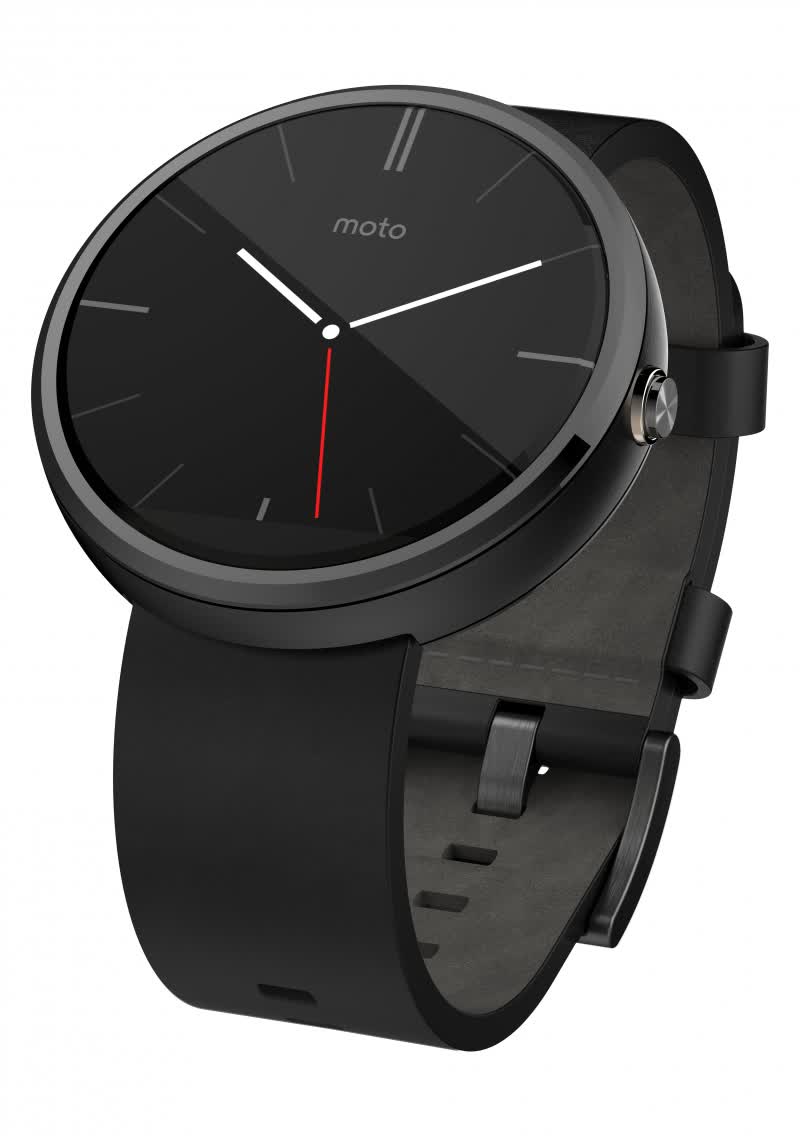
Motorola received a lot of praise with the original Moto 360 for being the first to bring the round watch face form factor to the Android Wear market. This made it far better looking and more watch-like than most of its competition, but it wasn't without its flaws. One of the biggest complaints from users involved the black bar on the bottom, commonly referred to as the 'flat tire'. Its presence isn't as big of an offense as some believe, but it's still a bit disappointing that Motorola didn't rectify this with the second-gen Moto 360 when LG and Huawei have both done fully round displays. The company justifies its existence as the location for the ambient light sensor that enables an auto-brightness mode.
The watch's design is customizable through Moto Maker. You get a handful of options for the design on the bezel, the color of the metallic case, and various straps. There are now also two screen sizes, 42mm and 46mm, with a 1.37-inch or 1.56-inch IPS LCD display. The screen is extremely sharp and easily legible, and also very responsive to touch and wrist-flick gestures.
Under the hood is a Snapdragon 400 processor, which has been used extensively in budget and mid-range smartphones, and is powerful enough to run Android Wear devices smoothly. There's also 512MB of RAM, 4GB of internal storage, Wi-Fi and Bluetooth 4.0 - meaning you can now use it without tethering it to a smartphone.
Like the Apple Watch is to the iPhone, Android Wear devices are for the most part an extension of your smartphone. You'll get notifications as they arrive on your phone, and you can interact with them or dismiss them with a swipe or flick of the wrist.
Apps are easily accessible with a swipe and 'Live Dial' watch faces can be set to display battery levels, step counts or app shortcuts without obstructing the time, or any visible notifications. There are dual microphones so you can use voice commands to control the Moto 360, dictate text messages, and everything is integrated with Google Now. You can't answer calls, which is not really a big deal. There's also no NFC on the Moto 360, so it can't do mobile payments and check-ins like the Apple Watch can.
The watch is IP67 dust and water resistant -- though if you go for the leather strap remember that this only applies to the watch itself. In terms of battery life, you'll get about a day's use from the 300 mAh battery on the 42 mm version of the Moto 360 or 400 mAh battery on the 46 mm model.
Best Fitness Tracker
Garmin Vivoactive
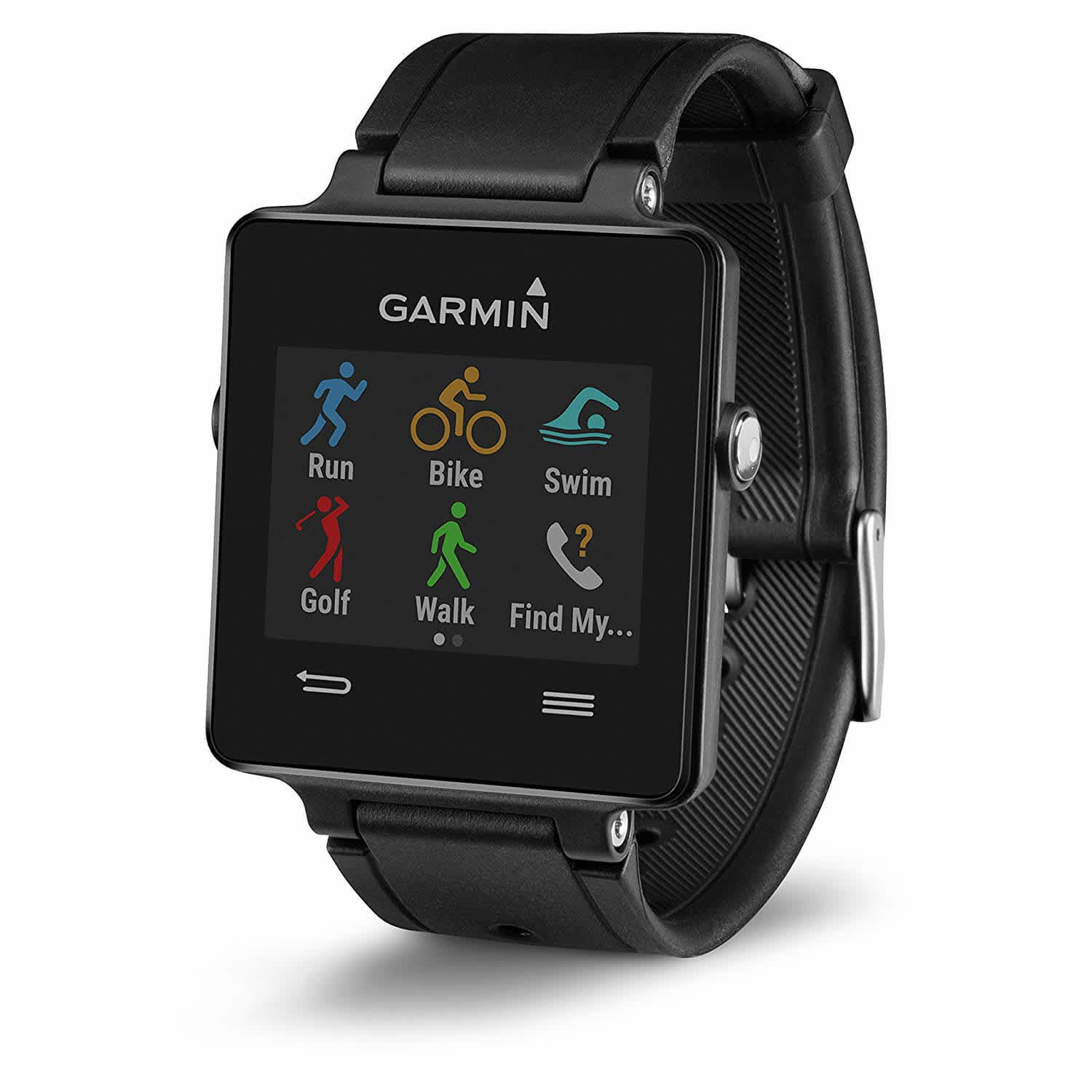
If you're looking for something that's first and foremost an activity tracker but also has smartwatch capabilities, then the Garmin Vivoactive deserves your attention. The watch itself is not much to look at. It's really thin at 8mm, especially in comparison to other GPS watches, but the design isn't visually appealing. However, what the Vivoactive lacks in looks, it makes up for in functionality.
The watch is both GPS and GLONASS capable, ensuring excellent positioning tracking. Aside from logging steps taken, calories burned, distance travelled, and sleep, it comes with apps for activities such as running, cycling, swimming, walking, and golf -- with the option to download nearby courses.
It doesn't just measure motion or calories burned. For example, swimming mode can capture your lengths, distance, pace, and stroke count/rate, and when playing golf, the device can measure each shot's exact yardage from anywhere on course.
The Vivoactive can pair with compatible sensors to track things such as running cadence, ambient temperature, as well as speed and pedaling cadence for cycling. The one big feature that's missing is an optical HRM that can take your heart rate through your wrist so you'll need to rely on a compatible accessory for heart-rate readings -- this feature is built into the newer Vivosmart HR.
At the end of an activity, all your stats sync with your Garmin account, visible in the Garmin Connect mobile app. When paired to a smartphone, the Vívoactive can also display notifications for incoming calls, text messages, emails, and calendar items. Note though, that you can't respond to them directly on the watch - you'll need your phone for that.
The Garmin Connect app also offers additional watch faces and additional widgets to track other sports. All of it is very customizable, from the different watch faces, to the stats that are displayed on screen during an activity.
For typical use, the battery can last up to three weeks, though with GPS enabled it will only last 10 hours. All in all, the Garmin Vivoactive is a solid activity tracker with pretty good smartwatch capabilities for a fitness-centric device.
Best for Watch Lovers
Tag Heuer Connected
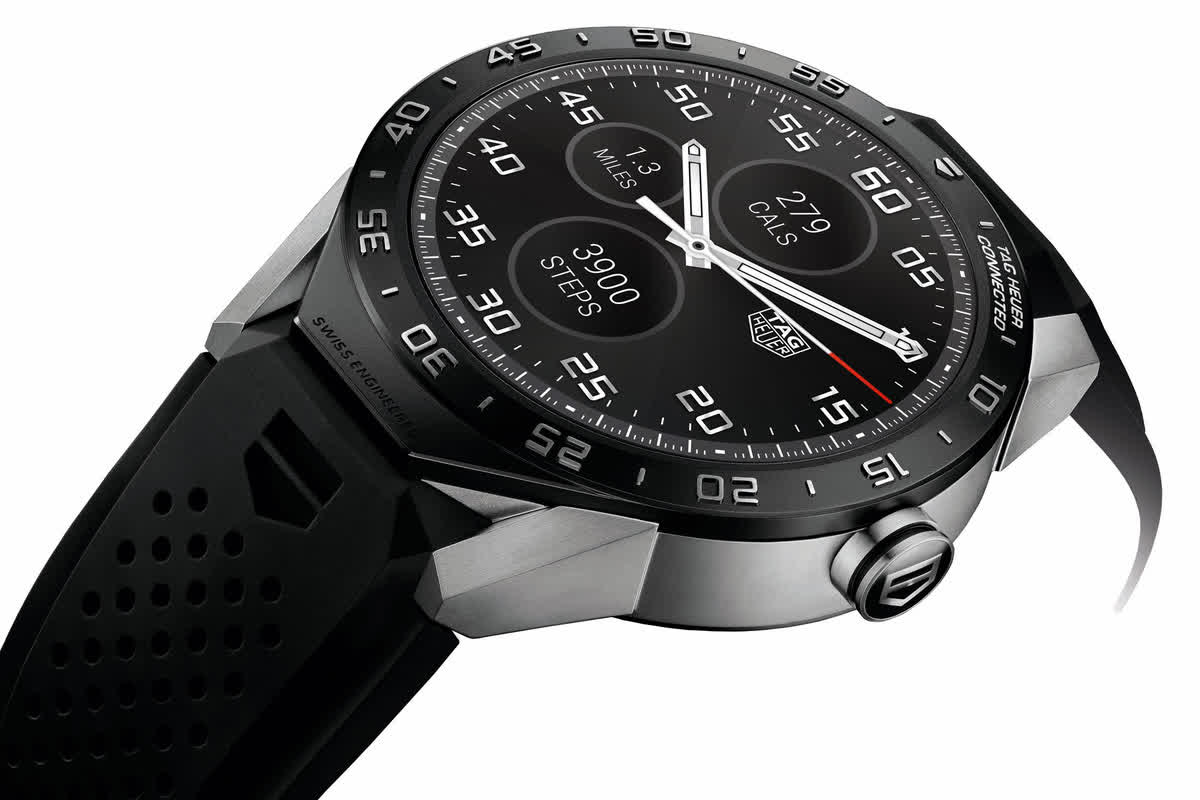
Tag Heuer's Connected is an incredibly well-built (and expensive) smartwatch that takes some cues from a handful of the company's existing models. It's surprisingly light -- considering that it's actually quite large -- thanks largely to the use of Grade 2 titanium for the chassis and lugs. It looks and feels great on the wrist. Tag Heuer has gone with a 46mm case, a 1.5-inch LCD display, fixed bezel with minute markers, and a TAG-imprinted crown on the right side. The Vulcanized rubber strap comes in a variety of colors with a folding clasp that is also made of titanium.
The display has a resolution of 360 x 360 (240ppi), and is fairly crisp. It remains readable even under bright lights. However, it's not quite as crisp or as pixel-dense as the display on the Huawei Watch and the smaller of the two Moto 360 variants. Which isn't a huge deal - but is certainly disappointing, considering the hefty $1,500 price tag.
Under the hood, there's a dual-core 1.6GHz Intel Atom processor and 4GB of storage on-board. The Tag Heuer Connected runs Android Wear, so the experience is pretty much the same as it is on every other Android Wear watch. You can check notifications, launch Google Maps Navigation, respond to messages with your voice, summon Google Now with the "OK, Google" command and so on. Watchmakers aren't really able to play much with Android Wear's functionality.
Tag's custom watch faces are by far some of the most stylish out there with an incredible attention to detail. Notifications are also less distracting, since they don't fill the lower portion of the screen like they do on other Android Wear watches - they must be pulled up with a swipe. These small details make the Connected feel more like a proper watch with additional smart features instead of the other way around.
The watch is IP67 rated for dust and water resistance, and the battery life from the 410mAh unit is better than most of its rivals -- though you still can't expect to get much more than a day of use on a single charge.
The Tag Heuer Connected certainly isn't for everyone - you can get the same smart features and functionality on much cheaper alternatives. But Tag aims to find an audience in luxury watch enthusiasts who might be curious about what a traditional watchmaker can bring to the smartwatch game.
The company also offers buyers the option to trade in their Connected watches after the two-year warranty expires, towards a mechanical Carrera watch -- but you will need to shell out another $1,500.
